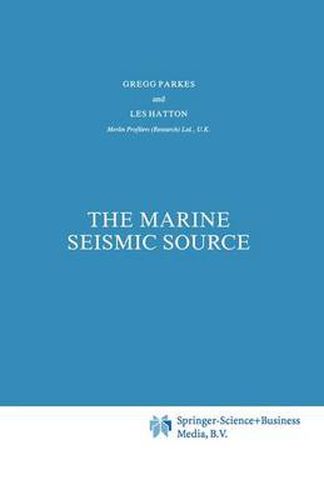Readings Newsletter
Become a Readings Member to make your shopping experience even easier.
Sign in or sign up for free!
You’re not far away from qualifying for FREE standard shipping within Australia
You’ve qualified for FREE standard shipping within Australia
The cart is loading…






This title is printed to order. This book may have been self-published. If so, we cannot guarantee the quality of the content. In the main most books will have gone through the editing process however some may not. We therefore suggest that you be aware of this before ordering this book. If in doubt check either the author or publisher’s details as we are unable to accept any returns unless they are faulty. Please contact us if you have any questions.
This book is about marine seismic sources, their history, their physical principles and their deconvolution. It is particularly accented towards the physical aspects rather than the mathematical principles of signature generation in water as it is these aspects which the authors have found to be somewhat neglected. A huge amount of research has been carried out by both commercial and academic institutions over the years and the resulting literature is a little daunting, to say the least. In spite of this, the subject is intrinsically very simple and relies on a very few fundamental physical principles, a somewhat larger number of heuristic principles and a refreshingly small amount of blunderbuss mathematics. As such it is still one of those subjects in which the gifted practical engineer reigns supreme and from which many of the important advances have originated. In Chapter 1 of the book, the underlying physics and concepts are discussed, including pressure and wave propagation, bubble motion, virtual images and the factors determining choice of source. In marine reflection seismology, almost all of the seismic data acquired currently is done with either the airgun or the watergun, which rely on the expulsion of air and water respectively to generate acoustic energy. As a consequence, the discussion in this chapter is geared towards these two sources, as is much of the rest of the book.
$9.00 standard shipping within Australia
FREE standard shipping within Australia for orders over $100.00
Express & International shipping calculated at checkout
This title is printed to order. This book may have been self-published. If so, we cannot guarantee the quality of the content. In the main most books will have gone through the editing process however some may not. We therefore suggest that you be aware of this before ordering this book. If in doubt check either the author or publisher’s details as we are unable to accept any returns unless they are faulty. Please contact us if you have any questions.
This book is about marine seismic sources, their history, their physical principles and their deconvolution. It is particularly accented towards the physical aspects rather than the mathematical principles of signature generation in water as it is these aspects which the authors have found to be somewhat neglected. A huge amount of research has been carried out by both commercial and academic institutions over the years and the resulting literature is a little daunting, to say the least. In spite of this, the subject is intrinsically very simple and relies on a very few fundamental physical principles, a somewhat larger number of heuristic principles and a refreshingly small amount of blunderbuss mathematics. As such it is still one of those subjects in which the gifted practical engineer reigns supreme and from which many of the important advances have originated. In Chapter 1 of the book, the underlying physics and concepts are discussed, including pressure and wave propagation, bubble motion, virtual images and the factors determining choice of source. In marine reflection seismology, almost all of the seismic data acquired currently is done with either the airgun or the watergun, which rely on the expulsion of air and water respectively to generate acoustic energy. As a consequence, the discussion in this chapter is geared towards these two sources, as is much of the rest of the book.